Last updated on August 10th, 2022
Cats are supposedly the most popular pets around the world. They are considered as top pets because of their calm and friendly nature when they live with people. Nevertheless, as much as people love them, there are many interesting facts about cats that you may not be aware of.
Learn about cats and humans in the ancient world, cat senses, cat anatomy, cat behaviours, cat food, cat world records, myths and superstitions, cat safety, cat breeds, and famous fictional cats in pop culture.
Interesting facts about cats
1. They keep their head level when chasing prey
Cats have an amazing way of catching their prey. They chase while keeping their head level. On the contrary, dogs bob their head up and down when chasing prey.
2. Asians eat cats
On average, there are about 4 million cats that are consumed in Asia every year. You can find cat markets, which have cats hanged on hooks, like how beef is hanged when prepared.
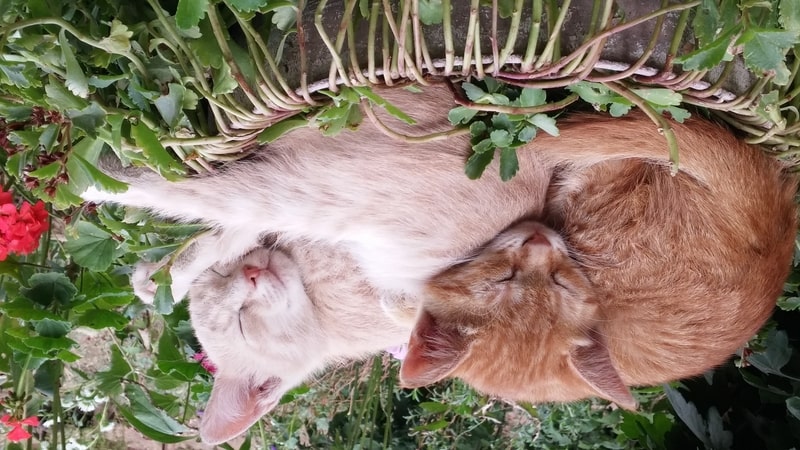
3. They spend most of their lives sleeping
A cat can sleep for about two-thirds of her day. It is believed that the cat will use its sleeping hours to restore the energy it used during the day. So, if a cat lives for nine years, it means that it has been asleep for six good years.
4. A pack of cats is called a Clowder
So when you see a group of cats playing or taking a nap in the neighborhood, you know how to refer to them.
5. The male cats are mostly left pawed while the female is right-pawed
This is interesting because about ninety percent of humans are right handed while the rest are mostly left-handed males.
6. An adult cat will meow to humans to communicate with them
When the cat meows, it is mostly asking for food, or it needs some attention. Nonetheless, the kitten will meow to the mother when they need to suckle or when they are threatened.
7. They yowl to fellow cats
You might have realized a different sound that is produced by a cat, which is mostly when the cat is communicating to a fellow cat. Usually, they will yowl when they need to mate, or when they are irritated.
8. A cat can make 100 sounds
Amazingly, a cat can make up to 100 different sounds.
This is compared to the dog, which can only make ten sounds. If you would be able to note every single sound that a cat makes, you’d be astonished.
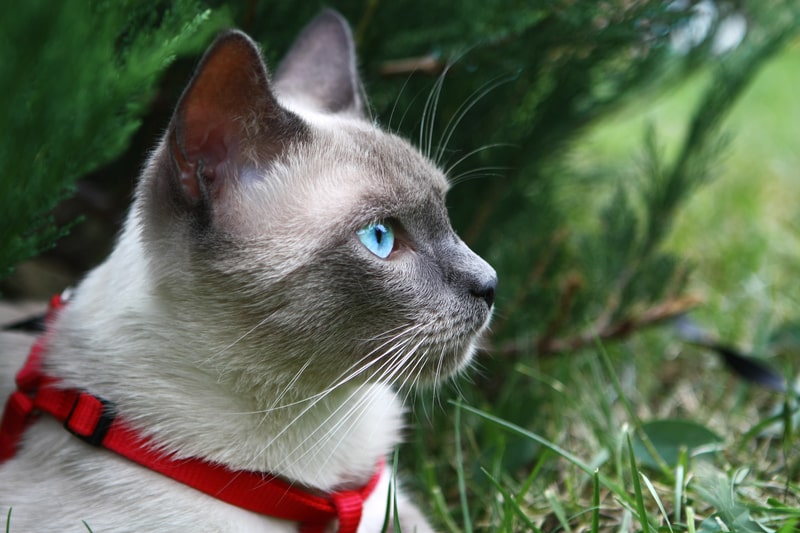
9. Cats are mostly born with blue eyes
Usually, all the cat breeds will be born with blue eyes. Nonetheless, the cat eyes will change as she grows. The more the cat gets old, the more the color of the eye changes.
10. The brain of a cat is 90% similar to the human brain
It has been studied that the brain of a person is almost similar to that of a cat. That is why a cat will respond emotionally almost similar as a human being would respond.
11. The smelly paws
The Cats do not have sweat glands like a human being. Rather, they have glands that are located on the paws. The paws will produce a scent, which is used to mark her territory. That is why you will notice her scratching around her territory.
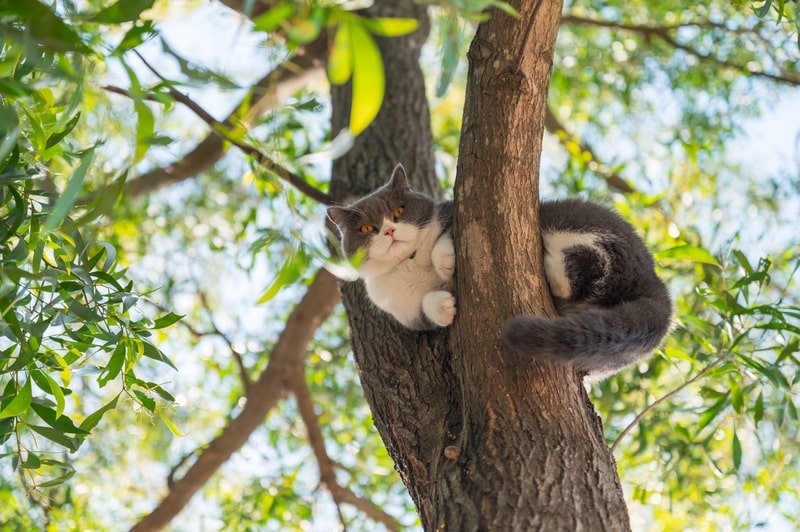
12. A cat cannot climb head first from a tree
If you have noticed, a cat will come down a tree backwards. This is because the paws point in one direction, so it can only come down a tree back.
13. They are North America’s top pets
Cats are recorded as the most popular pets in North America. 75 million cats are reported to be in America, compared to only 63 million dogs in the country. On average, about 30% of the North American households own a cat.
14. Pope Innocent VIII fated cats as evil
This was during the Spanish Inquisition, and it led to the burning of thousands of cats. As results, there was a rise in the rat population.
15. They were believed to be linked with witchcraft
This was during the Middle Age period. On the St. John’s Day, the cats were put into sacks and thrown into the fire. People also tossed cats from the church towers during the holy days.
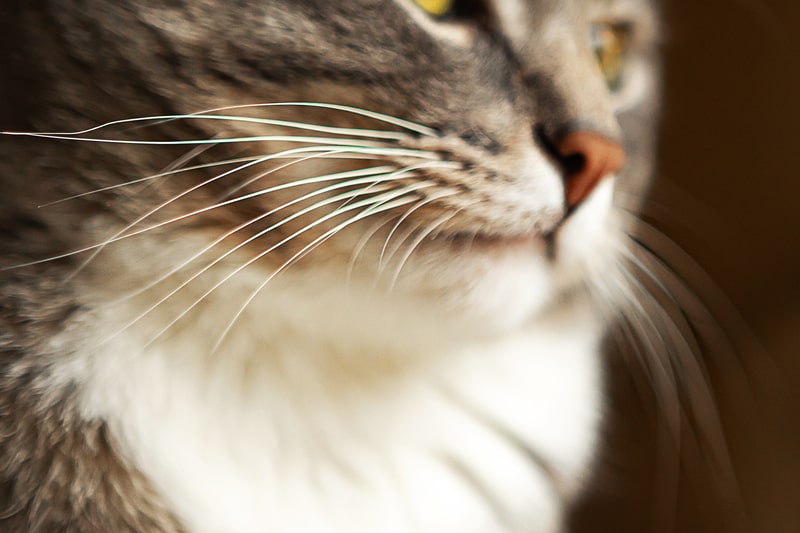
16. The whisker measurement
Each cat has a unique length of the whisker. The whiskers are not only there to make the cat look adorable. Also, the whiskers are also used by the cat to measure space. So if the cat were to pass through a tiny tunnel, she would use the whisker to know if the body will fit inside the tunnel.
17. The unique prints
Almost like humans, cats have a unique identification. This is found on the cat’s nose. When you look at the nose, you will notice a set of ridges and bumps that are unique. Every cat will have a different print on the nose. If the cats had a way of collecting their data, it would mean that each cat will require to record their nose print for reference purposes.
18. The cat’s dung coffee
The rarest coffee in the world is the Kopi Luwak. This coffee hails from Indonesia. A wildcat, Luwak, lives there, and when the cat eats the coffee beans, they will be digested in the stomach, and when the cat eliminates the dung, it is used as coffee beans.
19. A cat has about thirty-two muscles in the ear
That is the cat can control the ear to face different directions. A human only has six muscles. It has been calculated that the cat can rotate its ear about 180 degrees and direct it to any side.
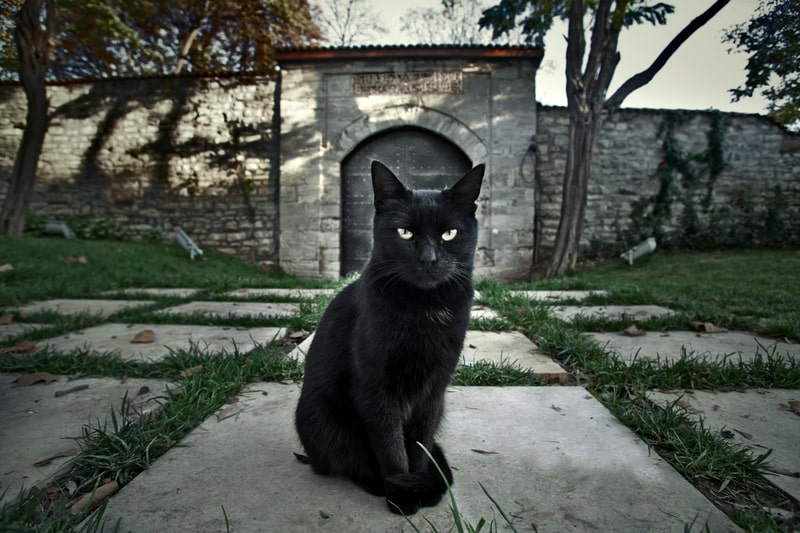
20. Black cats
Black cats are considered as bad luck in America while they are known to be linked with good luck in Asia and Europe.
21. Love of cats
And by the way, if you love cats, then you are an Ailurophilia, which comes from a Greek term.
Cats and Humans in the Ancient World
22. Ancient Mesopotamia
Wild cats lived among humans as far back as 100,000 years ago in Mesopotamia. These were domesticated at around 12,000 BCE alongside sheep, goats, and dogs. Farmers used them for pest control.
23. Oldest Known Pet Cat
A grave site in Cyprus dating back to 9,500 years ago contained bones of both a human and a cat. Buried with them are ornaments such as seashells and polished stones.
24. Ancient Egypt
Egyptians are known to have domesticated the African wildcat around 4,000 years ago. They viewed cats are magical divine creatures. Among their gods is Bastet who is half-female, half-feline.
25. Cat Smuggling
Egypt prohibited the export of cats. A dedicated branch of government dealt with this problem. Agents were sent out to other lands just to retrieve the smuggled felines.
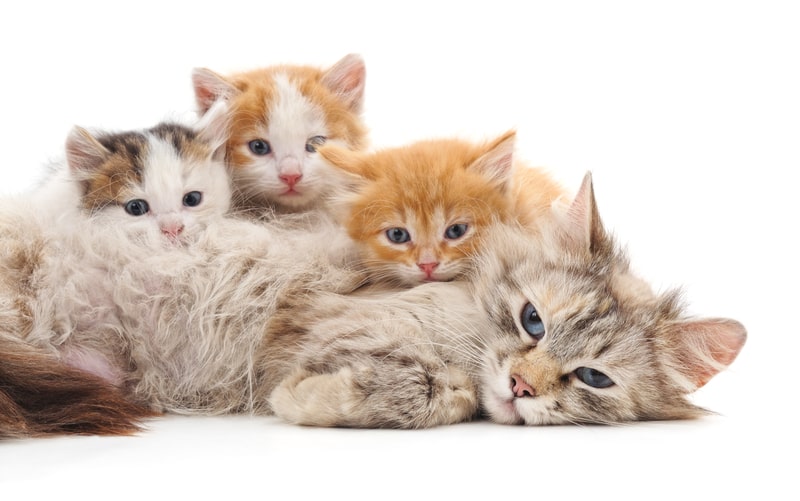
26. Death Penalty
Given their devotion to cats, it was illegal to harm their creatures in Egypt. Records from 450 BCE show that people who killed cats receive the death penalty.
27. Burial Rites
They were mourned uniquely in Egypt. In Ancient Egypt, when a family cat died, the family members would shave their eyebrows as a way of mourning the death of the cat. Also, they would drink wine and beat their chests to mourn the cat. The body is taken to Bastet’s temple where it is mummified and buried in sacred receptacles.
28. Ancient India
References to cats are found in the literary epics Ramayana and Mahabharata. “Puss in Boots” is taken from a 5th century BCE Indian folk tale called Panchatantra.
29. Phoenician Traders
Phoenicians were famous traders of the Antiquity. They smuggled cats out of Egypt and brought them into Europe. Cats may also have been used to control vermin in their ships.
30. Japan
The early Japanese saw cats as guardians of their homes and valuable books. They had their own private pagodas. In the 10th century CE, cats were so expensive only the nobility could afford them.
31. Ancient Rome
Romans used weasels for pest control so they were not as dependent on cats. They were mostly kept as pets and regarded as a symbol of independence, not utility.
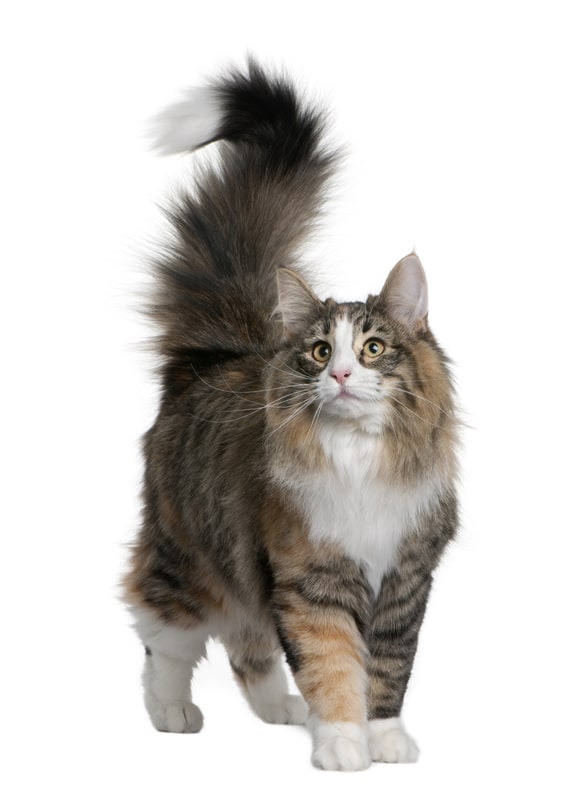
Cat Senses
32. Blue Eyes
Kittens are all born with cloudy blue eyes but the color could change after six weeks based on genetics. Common hues include green, yellow, orange, copper, and hazel.
33. Adult Discoloration
Color shifts could also point to health problems in adult cats. Possible causes are inflammation due to trauma, tumors, infection, diabetes, glaucoma, or high blood pressure.
34. Night Vision
Cats have elliptical pupils that open wider than human eyes, allowing them to gather more light from their surroundings. This provides excellent night vision for hunting prey.

35. Teeth
Cats have 26 baby teeth that fall out at 5-7 months to give way to 30 adult teeth. Incisors are for grooming, fangs are for hunting, and molars are for grinding food.
36. No Cavities
Domestic cats don’t have pits on their molars so sugar-eating bacteria have nowhere to thrive. Hence, they do not get cavities. However, they can develop gum disease, oral cancer, and inflammation.
37. Frequency Range
Cats can hear frequencies between 45 hertz and 64,000 hertz. In contrast, humans can only recognize frequencies between 20 hertz and 20k hertz.
The approximate hearing range for different species
| Serial | Species | Approximate Range (Hz) |
|---|---|---|
| 1. | Human | 64-23,000 |
| 2. | Dog | 67-45,000 |
| 3. | Cat | 45-64,000 |
| 4. | Horse | 55-33,500 |
| 5. | Cow | 23-35,000 |
| 6. | Sheep | 100-30,000 |
| 7. | Rabbit | 360-42,000 |
| 8. | Rat | 200-76,000 |
| 9. | Mouse | 1,000-91,000 |
| 10. | Bat | 2,000-110,000 |
| 11. | Elephant | 16-12,000 |
| 12. | Owl | 200-12,000 |
| 13. | Chicken | 125-2,000 |
38. Ear Sensitivity
Cats can move their outer ear towards sound sources to increase their sensitivity by 15-20%. They can hear sounds 4-5x farther than humans can.
39. Congenital Deafness
Due to genetic anomalies, white cats that have blue eyes are more likely to have congenital deafness. They have a gene that suppresses pigment cells. The affected tissues in the inner ear degenerate, reducing sensitivity to sounds.

40. Smell
Cats have 70 million olfactory cells inside their nose to identify odors from afar. They also have scent glands along their lips, chin, forehead, and under the tail for marking territory.
41. Taste
Cats have limited taste perception with only 470 taste buds or so on their tongues. In comparison, dogs have 1,700 and humans have 9,000.
42. Cat Hair
Cat hair is a useful shield against extreme hot and cold. The coat also protects them from thorns, stings, and insect bites.
43. Temperature Regulation
Cats can’t just rely on sweating to cool themselves down. They also pant to expel body heat. If outdoor temperature rises above 100 degrees Fahrenheit, cats should cool down indoors to prevent heatstroke.
Cat Anatomy
44. Cat Bones
Cats have more bones than humans. They have 230 bones while we only have 206. Interestingly, they don’t have collarbones. This helps them sneak into tight gaps.
45. Fractures
Despite their grace and flexibility, cats can still get injured due to falls, collisions, and attacks. X-ray can confirm fractures. These usually take 4-6 weeks to heal.
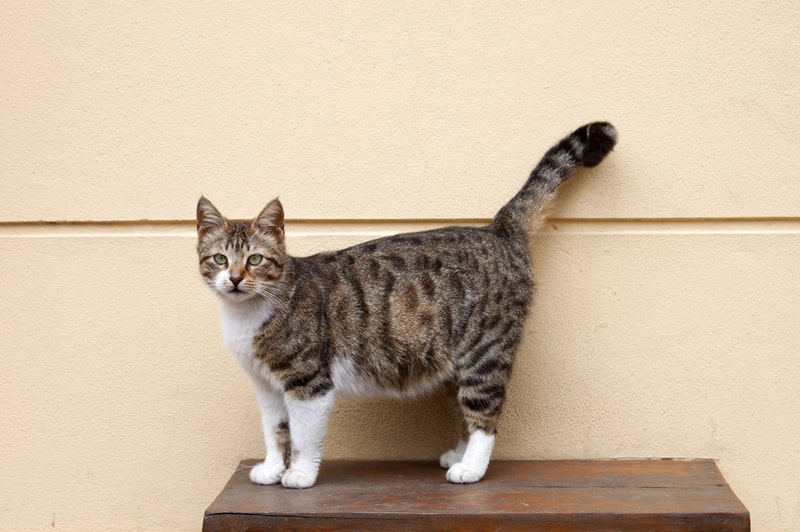
46. Tails
Cats use their tails for balance, communication, temperature regulation, and self-expression. These are susceptible to bite wounds due to fights with other animals.
47. Urinary Tract
It is estimated that more than 50% of cats suffer from lower urinary tract disease and bladder inflammation.
48. Reproduction
Assuming none of them dies, a pair of cats and their kittens can soon overrun a home by producing 420,000 offspring within seven years.
49. Male Castration
Male cats can undergo castration to prevent unwanted litters. This also reduces the risk of perianal tumors, testicular cancer, and prostate disease.
50. Female Spey
Female cats can undergo a spey which is an abdominal surgery aimed at removing the uterus and ovaries. Aside from preventing pregnancy, this also lowers risk of breast cancer, and womb infections.
51. Whiskers
Whiskers have extremely sensitive nerve endings. Cats use them to identify and examine everything they touch. These also give them a sense of their orientation.
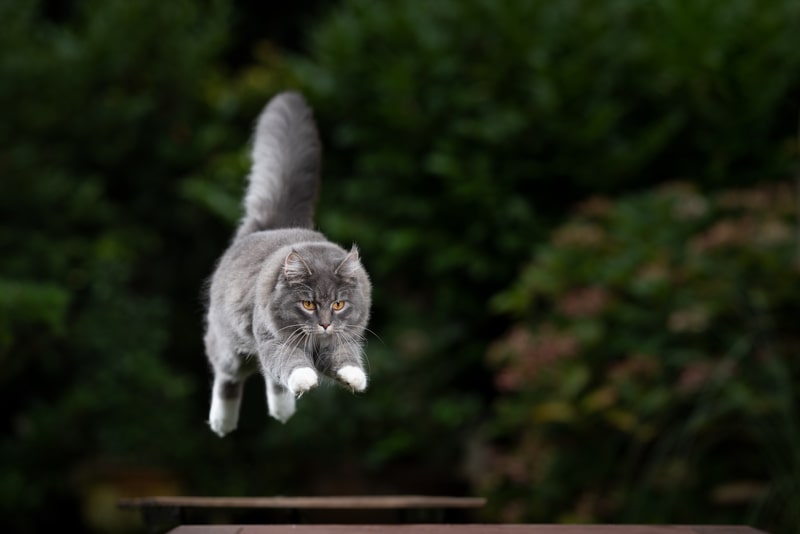
52. Landings
Cats land on their feet by following a series of movements. They rotate their head to find the ground, twist their spine, and align their rear legs. They arch their back and relax to reduce the impact.
53. Unique Trait
Whereas humans have unique fingerprints, cats have unique nose pads. The ridges are always different so these are useful for telling cats apart.
Cat Behaviours
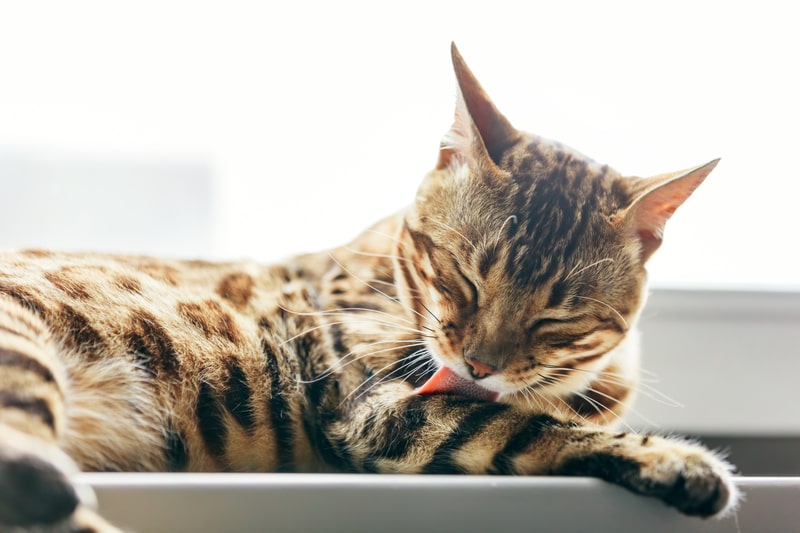
54. Grooming Process
Cats spend nearly half of their waking hours grooming themselves. Their rough tongues brush dirt and fleas from their coats. They nibble away at debris in hard-to-reach areas.
55. Grooming Rationale
Cats groom to remove odors that predators use to find them. Licking fur also helps air circulate better for temperature regulation. The anti-microbial enzymes in their saliva can prevent wound infection.
56. Over-grooming
Highly stressed cats may groom obsessively to soothe themselves. They could also do this to get rid of parasites such as ticks and fleas.
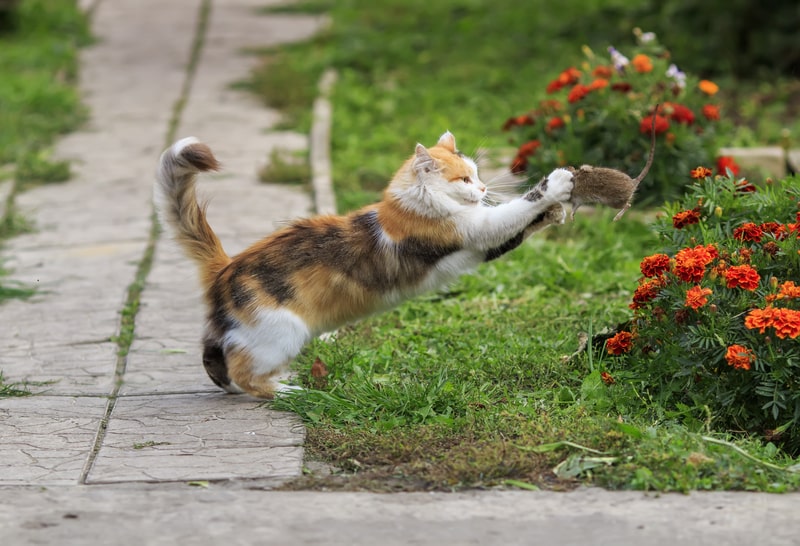
57. Hunting Instinct
Prior to domestication, cats had to hunt for all their food to survive. House cats have retained this instinct, although they do it more for entertainment. They only eat about 30% of fallen prey.
58. Hunting Lessons
Studies show that kittens who were able to observe their mothers hunt turn out to be better hunters compared to kittens who had to figure it out on their own.
59. Breeding
Heat cycles last for 2-3 weeks and typically offers from spring to fall. Cats in heat will exhibit increased vocalization, rolling on the ground, stretching, and attempts to escape the house.
60. Pregnancy
The gestation period for cats is 65 days. They won’t show signs of pregnancy until after a few weeks. These include enlarged red nipples, increased appetite, and rounded abdomen.
61. Labor
Prior to delivery, cats get agitated and bathe with increased frequency. Milk may leak from the nipples. Owners may notice a greenish-black vaginal discharge.

62. Kitten Play
The period between 7 to 14 weeks is the most active play period for kittens. They may hug, ambush, lick, pounce, leap, and chase tails. These increase their social skills and physical coordination.
63. Adolescence
Between 6 to 18 months, cats grow into adolescence. They explore dominance within the household by challenging other cats, animals, and humans. If not neutered, they begin to exhibit sexual behaviors.
Cat Food
64. Obligate Carnivores
Cats are obligate carnivores. They can’t get all the nutrients they need from plants and bacteria alone because they lack vital digestive enzymes. They must eat meat.
65. Digestive Tract
Cats have one of the shortest digestive tracts among mammals. This makes them inefficient at breaking down carbohydrates from plants but they can easily process meat.
66. Protein Dependence
Cats are highly dependent on protein for meeting their blood glucose requirement. If they don’t get enough from their diet, then they will use the protein from their own muscles and organs.
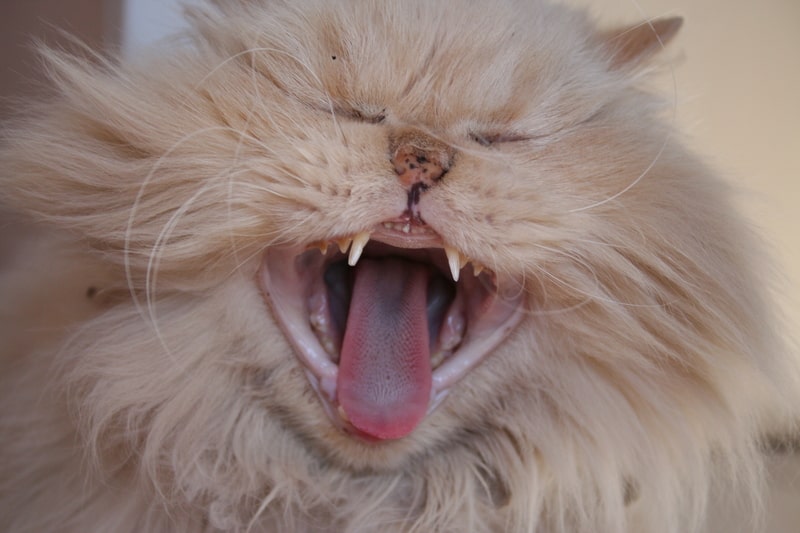
67. Rough Tongue
Pet owners can attest that their tongues feel like sandpaper. These are useful when they are trying to remove every morsel from animal bones.
68. Dry Cat Food
Commercial cat food is formulated to provide balanced nutrition for both kittens and adult cats. Dry food is only 6-10% water. The rest is a combination of meat, poultry, grain, fish meal, milk products, fiber sources, supplements, and flavor enhancers.
69. Semi-moist Food
These products are approximately 35% water. They mostly contain meat and their byproducts. Manufacturers will often add cereals, grain byproducts, soybean meal, and preservatives. These are more appealing to cats compared to dry food.
70. Canned Food
The moisture content is at least 75%. Canned food is the most expensive but also the most attractive for cats. These are great for picky eaters. They have the longest shelf life while unopened.
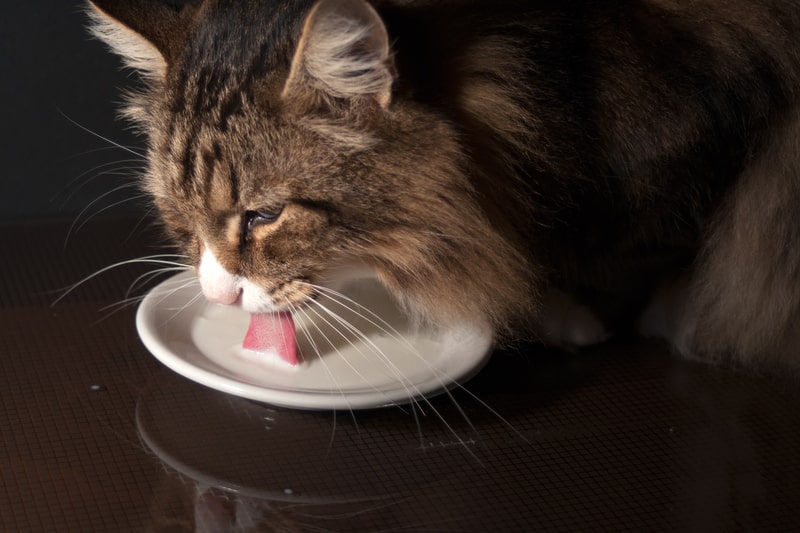
71. Harmful Foods
Onions, garlic, and chives can cause anemia in cats. Milk can lead to stomach upset while grapes can trigger kidney failure. Chocolate and caffeine can be lethal.
72. Homemade Diets
Pet owners can make their own cat food although ensuring correct nutrient content makes it difficult and time-consuming. Veterinarians may supply recipes to deal with specific medical conditions such as pet obesity and diabetes.
73. Treats
Treats should not be more than 10-15% of their total caloric intake. Cats may love treats but these do not provide balanced nutrition.
. . . continue reading on the next page
